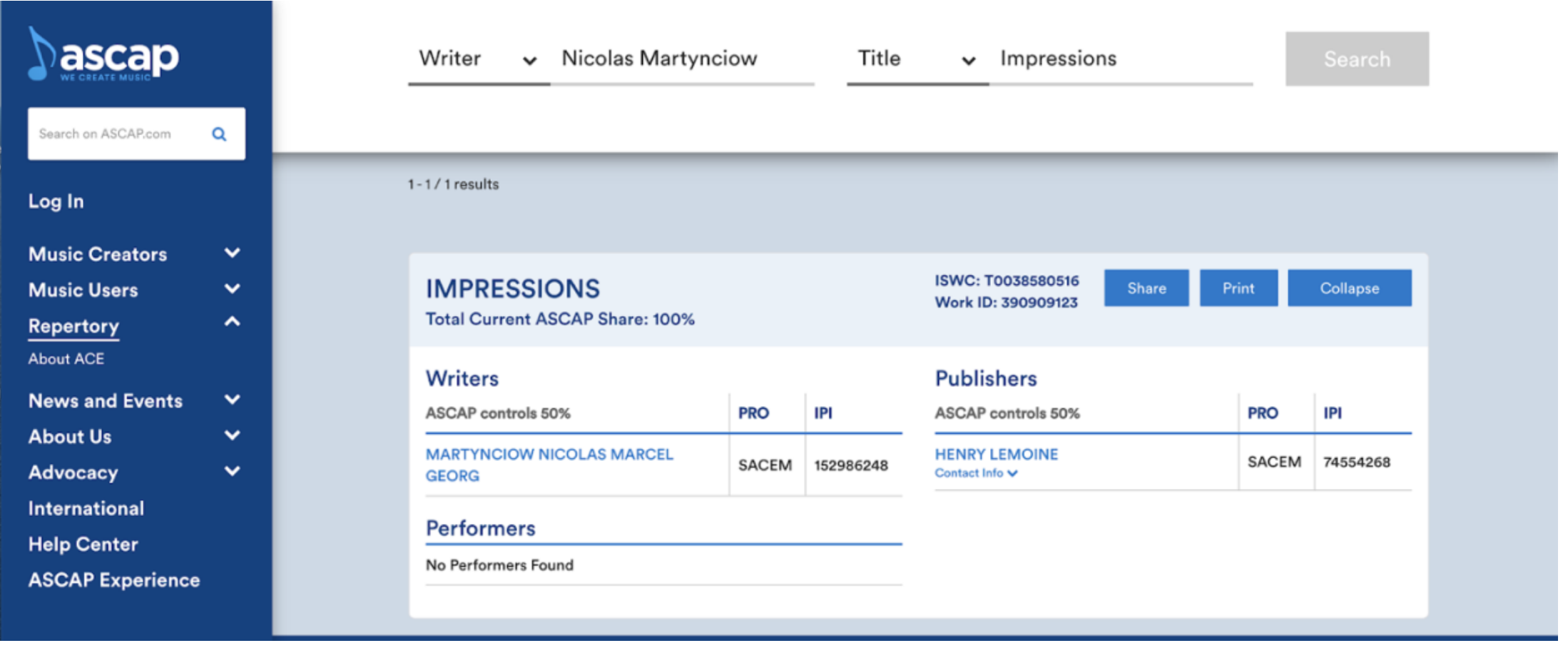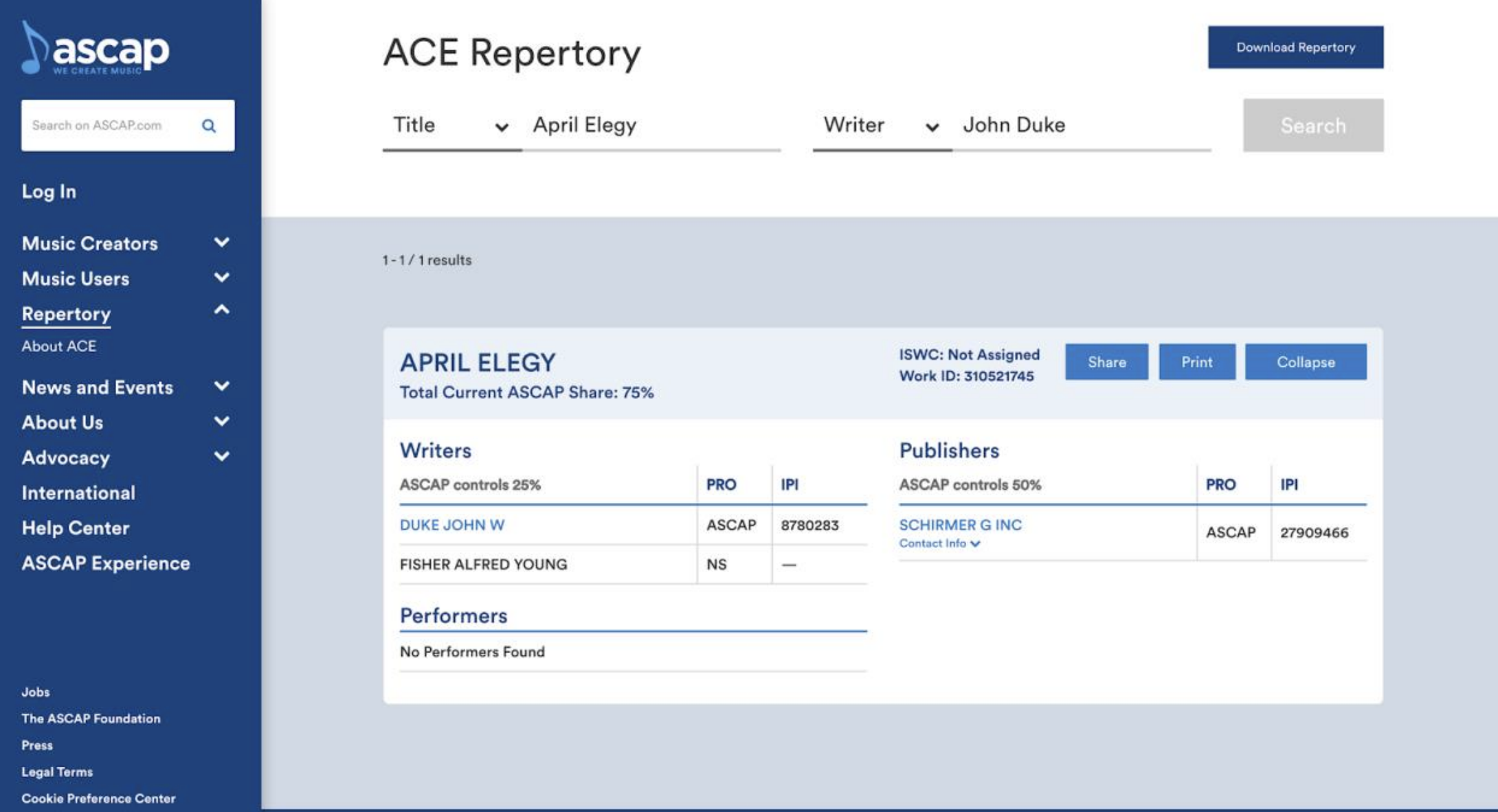How to do a Copyright Check
Now that we are broadcasting performances on YouTube, it is advised to do a copyright check as you build your program.
The Reva and Sid Dewberry Family School of Music has licenses with ASCAP, BMI, SESAC, and Global Music Rights, and the step-by-step directions below will guide you so you can confirm for yourself that we can legally broadcast your entire program.
- Look for the date and publisher on the piece of music you would like to perform. Answer these questions.
- When was the piece published? A piece is in the public domain if it was first published before 1925. Look at the United States column on the IMSLP Public Domain as a resource.
- Identify the composer, publisher, and if necessary, the lyricist.
- Look up your piece using each of the databases below until you find your piece. Use the last name of the composer or if you are using the title, avoid any part that has punctuation (ex. don’t, ain’t, etc.). The licenses we have at the Dewberry School of Music are:
- Look for the ASCAP/BMI/SESAC/Global Music share. If the total share is 100%, we have the license to cover a broadcasted performance. If not, proceed to step 4.

- If the total share of your piece is not 100% with one license database, continue with the other two. So, if ASCAP doesn’t cover it, try BMI and SESAC. Determine who holds the rights to the piece, the composer, publisher, and/or lyricist. In the following example, the composer and the publisher have a 75% share under ASCAP. The lyricist has 25% of the rights and is listed as “no share” (NS) in the ASCAP database, so they are not covered by ASCAP.

- If you are unable to find your piece covered 100% by public domain or the three license databases, the next step is to determine if the composer or lyricist is still alive.
- If the composer or lyricist that is NOT covered is alive, you can contact them directly (not through the publisher) to ask express permission to broadcast the piece for your performance and forward their consent to Operations.
- If the composer or lyricist is no longer living, we cannot broadcast the piece, but the piece can be performed before or after the livestream for the audience.
- If the publisher is the portion not covered by our license, we cannot broadcast the piece, but the piece can be performed before or after the livestream for the audience.
- If your piece is not in the public domain and is not listed in any of the databases, we cannot broadcast the piece, but the piece can be performed before or after the livestream for the audience.
- Use this checklist to check the copyright of each piece you are planning on performing in any way, including pieces that are almost prepared enough to be used in a performance.
- If the piece you are performing is an arrangement, you will need to specifically look up the information for the arrangement’s composer and publisher. Arrangements do not carry over permissions from the original composer/publisher.
- If using a clip of a copyrighted piece, anything under 30 seconds is fine.
Copyright checks for arrangements for orchestra: Look up your piece using ASCAP. Copyright checks for arrangements for wind symphony: Look up your piece using the Wind Repertory Project. Find the publisher and look at the year, if it’s after 1925 it cannot be broadcast.
